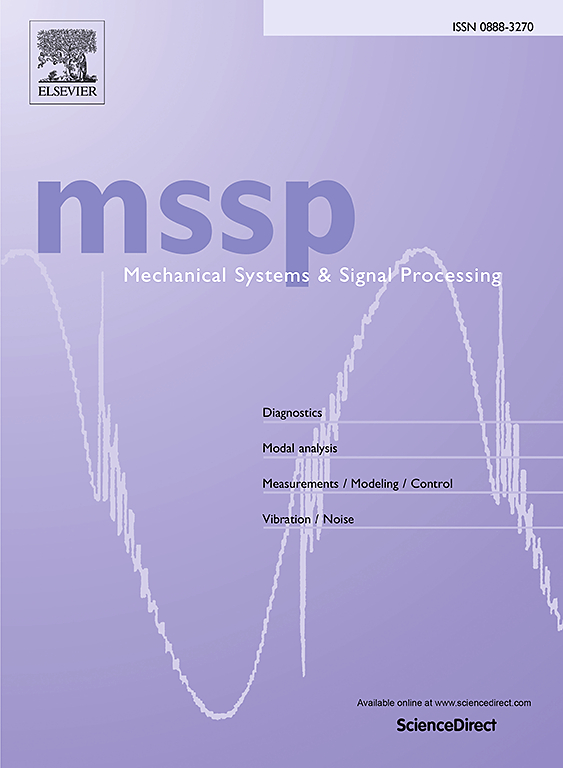Complex dynamics and targeted energy transfer of double-beam nonlinear energy sink with magnetic interactions
IF 7.9
1区 工程技术
Q1 ENGINEERING, MECHANICAL
引用次数: 0
Abstract
Nonlinear energy sinks (NESs) have garnered sustained attention in recent years as highly efficient broadband vibration suppression devices. However, achieving optimal vibration control within limited space through the design of compact NESs configurations remains a key issue hindering its engineering applications. To address this, the present paper proposes a novel compact double-beam nonlinear energy sink device with magnetic interactions. The device constructs a two-degree-of-freedom vibration unit by cutting an internal sub-beam within the main beam, and integrates magnet mass blocks at the ends of the inner and outer beams. It utilizes the magnetic repulsion effect to develop an adjustable nonlinear stiffness system. The dynamic model of the 3DOF coupled system is formulated using Lagrangian method, with approximate analytical solutions derived through the harmonic balance method. The study conducts a parameter sensitivity analysis to explore the impact of NES parameters on the frequency response characteristics and vibration suppression performance of the primary system. Finally, the transient vibration suppression performance of various damping devices under various initial energy excitations is assessed based on critical performance indicators, such as the energy dissipation ratio. The findings show that the proposed NES achieves remarkable energy dissipation efficiency and robust performance across a wide frequency excitation range. This research presents a novel solution and theoretical foundation for broadband vibration control in engineering structures.
具有磁相互作用的双束非线性能量汇的复杂动力学与定向能量传递
非线性能量阱作为一种高效的宽带振动抑制器件,近年来受到了广泛的关注。然而,如何在有限的空间内实现最优的振动控制仍然是阻碍其工程应用的关键问题。为了解决这一问题,本文提出了一种新型的紧凑双束非线性磁相互作用能量阱装置。该装置通过在主梁内切割一个内部副梁来构建一个两自由度的振动单元,并在内外梁两端集成磁铁质量块。它利用磁斥力效应来开发一个可调的非线性刚度系统。采用拉格朗日方法建立了三维自由度耦合系统的动力学模型,并通过谐波平衡法得到了近似解析解。本研究进行参数灵敏度分析,探讨NES参数对主系统频响特性和抑振性能的影响。最后,基于能量耗散比等关键性能指标,对不同初始能量激励下不同阻尼装置的瞬态抑振性能进行了评价。研究结果表明,在较宽的激励频率范围内,该系统具有良好的能量耗散效率和鲁棒性。该研究为工程结构的宽带振动控制提供了新的解决方案和理论基础。
本文章由计算机程序翻译,如有差异,请以英文原文为准。
求助全文
约1分钟内获得全文
求助全文
来源期刊

Mechanical Systems and Signal Processing
工程技术-工程:机械
CiteScore
14.80
自引率
13.10%
发文量
1183
审稿时长
5.4 months
期刊介绍:
Journal Name: Mechanical Systems and Signal Processing (MSSP)
Interdisciplinary Focus:
Mechanical, Aerospace, and Civil Engineering
Purpose:Reporting scientific advancements of the highest quality
Arising from new techniques in sensing, instrumentation, signal processing, modelling, and control of dynamic systems
 求助内容:
求助内容: 应助结果提醒方式:
应助结果提醒方式:


